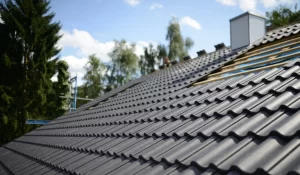Dark Kitchens – The Latest Trend in Home Dining

Dark kitchens – also known as shadow kitchens or ghost kitchens – have seen tremendous growth during this pandemic. Aggregator-owned dark kitchens provide food brands with access to menu, online setup and delivery drivers without the need to invest in physical restaurant sites.
However, they come with their own set of risks; here we explore some of the primary concerns associated with virtual restaurants.
1. It’s Elegant and Sophisticated
Uber Eats, Deliveroo and Doordash have brought dark kitchens into the mainstream consciousness. This business model allows restaurants to offer their services through third-party platforms while working in dedicated kitchens specifically tailored for delivery services.
Dark kitchens offer minimal startup costs and lower overhead expenses, plus easy menu adjustments without needing a physical storefront – making them the ideal solution for new restaurants as well as established brands looking to expand their delivery offerings.
Restaurants can use dark kitchens to test new menu items and recipes without risking customer feedback in the real restaurant, thus creating stronger relationships with their customer base. It also reduces food waste as only necessary meals will be made; saving energy bills by only using their kitchen for online orders served up from that virtual kitchen – an ideal solution for businesses aiming to reduce environmental impact.
2. It’s Easy to Maintain
Uber Eats, Doordash and Deliveroo’s success has paved the way for dark kitchens to gain popularity. A dark kitchen business model allows restaurants to focus on serving customers without becoming involved with order processing and food prep; rather they work with outside businesses that specialize in these areas.
These kitchens create highly efficient production units designed for food delivery. Sometimes these kitchens will serve multiple brands within one space – creating virtual restaurants.
Food businesses that utilize these types of kitchens reap many advantages, including being able to experiment with new concepts at much reduced risk and quickly adapting to market changes. Furthermore, they can expand their reach without opening an additional restaurant and reduce carbon emissions by having multiple dishes delivered simultaneously from a central area – similar to how Amazon fulfils orders from warehouses rather than individual stores.
3. It’s Eco-Friendly
Dark kitchens are becoming an increasingly popular trend in the restaurant business. These kitchens, which are not open to customers and use various technologies to process orders and deliver food directly, also collect customer ordering habits to better predict demand and meet it more precisely.
They are more energy efficient than traditional restaurants, meaning reduced energy costs and potential food waste reduction.
Wood and stone materials are central components of the moody kitchen aesthetic, adding warmth, earthiness and intimacy. Their rustic charm complements the deep blues, greens and blacks often used in this style perfectly while creating an atmosphere of intimacy and comfort in the space.
4. It’s Affordable
Dark kitchens are often much cheaper than regular restaurants, since chefs don’t need to rent dining spaces and can focus on producing top-quality cuisine at reduced costs while saving on expenses such as furniture and supplies by not catering directly to dine-in customers.
Some delivery aggregators have even taken to creating dark kitchen spaces of their own to facilitate the rapid rise in home delivery and reach new audiences that traditional restaurants cannot.
Dark kitchens’ success relies heavily on digital marketing and consumer awareness, including optimizing your website, social media pages and customer service interactions. Deliver on promises for fast and reliable delivery – this will build customer loyalty while driving revenue growth. Working closely with third-party delivery platforms ensures orders are handled smoothly and accurately.







